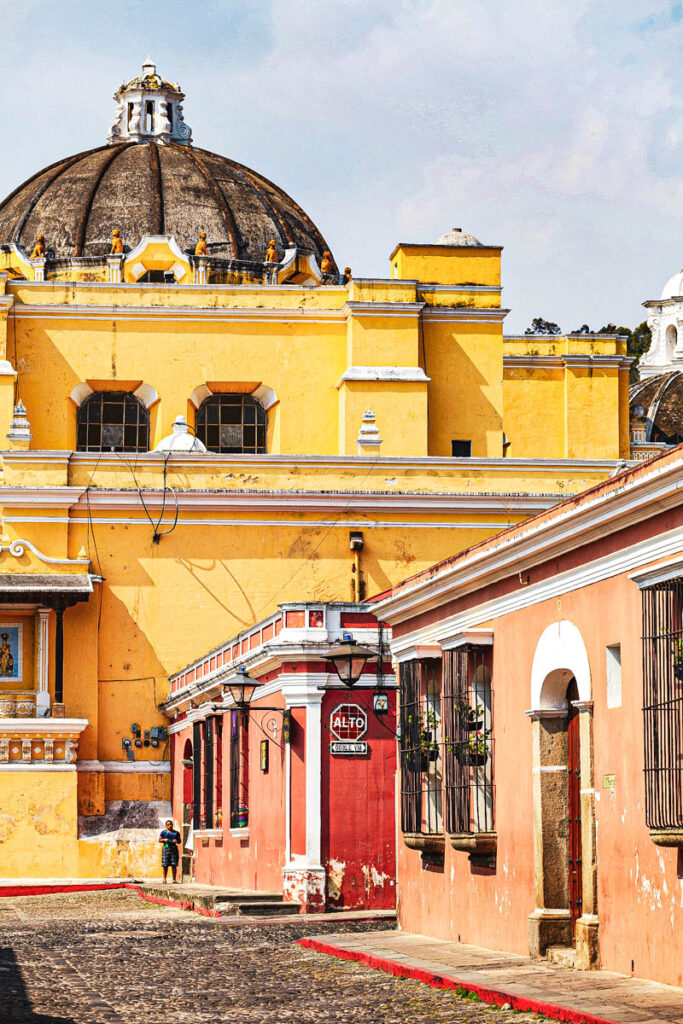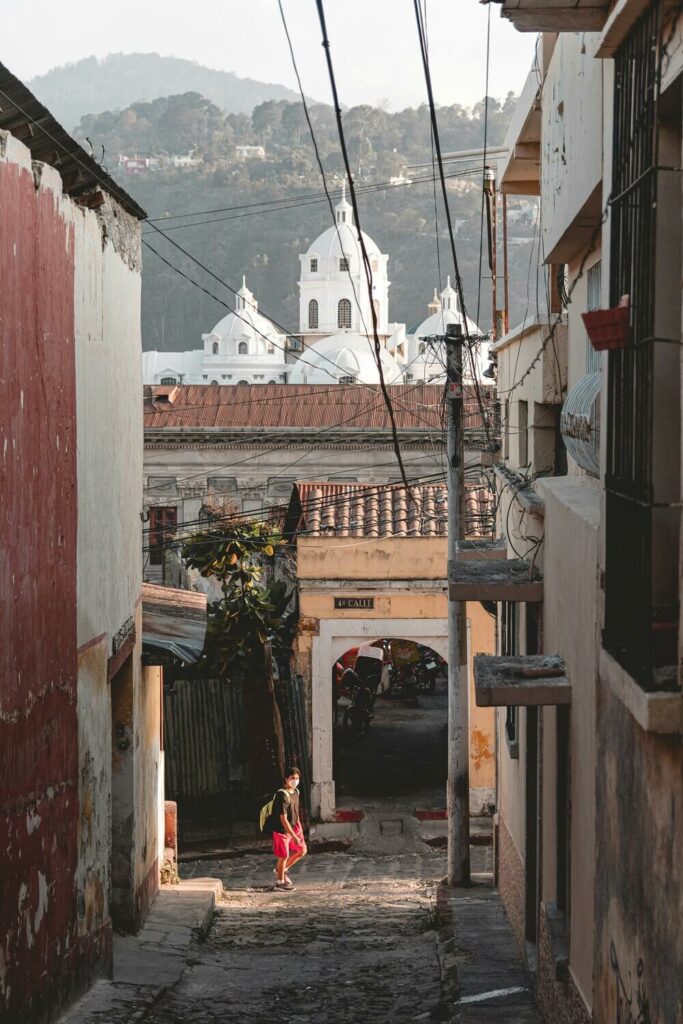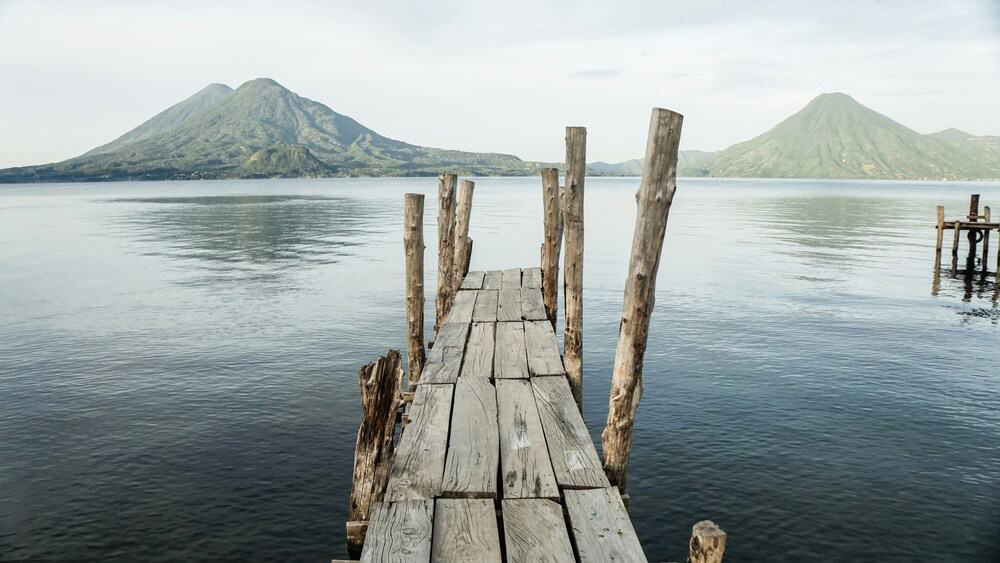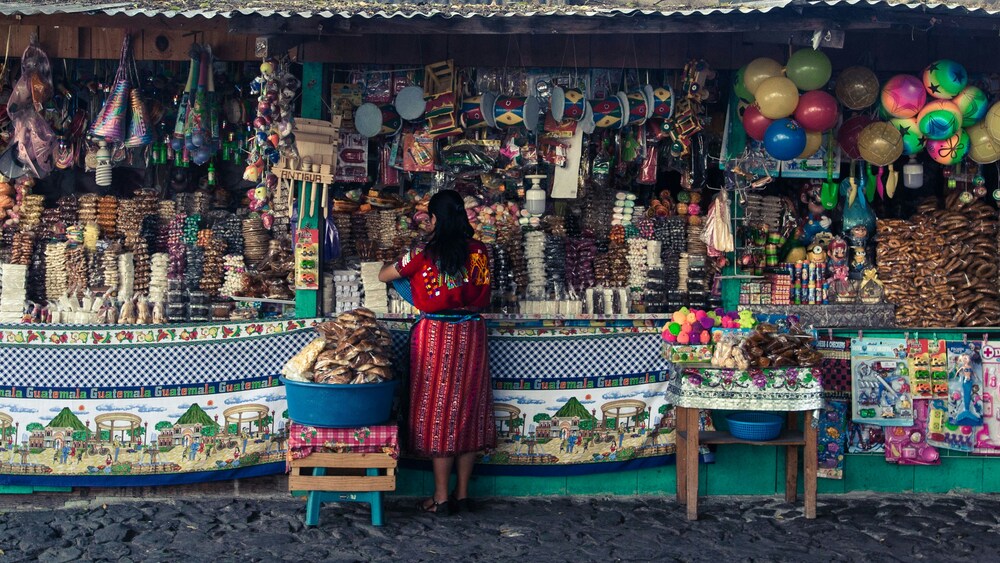This post may contain affiliate links. We may receive a small commission, at no cost to you, if you make a purchase. Read Disclosure.
For those who want to brush up on their Spanish skills, or even learn from scratch, the best and cheapest place to learn Spanish is Guatemala.
Aside from hiking volcanoes and relaxing on the shores of Lake Atitlan, many people choose to visit this country for the sole reason of learning Spanish, and there are hundreds and hundreds of schools set up to meet this demand.
It can be hard choosing a Spanish school in Guatemala. There are so many of them, and each of them offer something different. This is why I’ve put together some tips on how to choose a Spanish school in Guatemala to help you narrow down your search.
How To Choose A Spanish School In Guatemala
1. Decide where you want to study
There are Spanish schools in pretty much every town in Guatemala, so the first thing to figure out is where you want to study.
I spent most of my time learning Spanish in both Antigua and Quetzaltenango (Xela), but you can learn pretty much anywhere in the country.
If you’re not sure where in Guatemala you want to base yourself, here are some of the most popular places to choose from:
Antigua

The most popular option is Antigua, located about an hour from Guatemala City. It’s a UNESCO world heritage listed small town and incredibly pretty with colonial buildings, cobbled streets, and a vibrant, atmospheric charm.
The entire centre of town is geared towards tourists and Spanish students – there are all sorts of safe, clean restaurants selling delicious food like bagels, pizza, and fondue, and the bar scene is incredible.
Not to mention almost the entire town is wired with internet, so it’s really easy to live in and feel at home.
Personally, I found it a little too sanitised for my liking. Additionally, most people speak English, and it’s a hot spot for tourism and backpackers, making it less likely that you need to use your Spanish for everyday transactions.
Combo Tour: Colonial Antigua & Guatemala City Explorer Tour: Enjoy 2 wonderful cities, ancient colonial city of Antigua, a UNRSCO World Heritage Site, and Modern Guatemala City at the same day. Learn more here!
Quetzaltenango (Xela)

Those who are a little more serious about learning Spanish in Guatemala head to the highland town of Quetzaltenango (Xela).
Located about four hours north of Antigua, it’s very much a Guatemalan City and much grittier than Antigua, and for me, that was the attraction.
There are still plenty of vibey cafes and restaurants frequented by (mostly American) Spanish students, although things are a little cheaper in Xela.
Not many locals speak English, so basically every transaction or interaction will have you speaking Spanish. This is great, as it means you get to practice what you’re learning and use it within context.
There are also loads of hiking opportunities in the nearby hills, and plenty of projects to volunteer with.
After four weeks of learning Spanish in Xela, you’re going to leave able to have simple conversation in Spanish at the very least.
Lago de Atitlan

I didn’t study here, but Lago de Atitlan, partway between Antigua and Xela, is quickly becoming a popular location to learn Spanish in Guatemala.
The wifi is incredibly fast and the food available rivals Antigua for variety. It is more laid back and often cheaper than Antigua, and Lago de Atitlan’s picturesque setting makes for a pretty chilled lifestyle.
2. Talk to people who’ve done it
I chose my Spanish schools in Antigua and Xela based solely on recommendations from other travellers.
I talked with travel bloggers and spoke to people I met on my travels who have done it, and this helped me make an educated decision.
Feel free to ask me questions in the comments below.
3. Ask about the Spanish teachers

At both my schools, the Spanish teachers were hugely experienced. Both had more than 10 years of teaching Spanish behind them and it showed.
They were not only qualified teachers, but Native Spanish Speakers, which helped with cultural immersion as well as learning the colloquial forms of grammar and vocabulary.
Be sure you can understand their accent, this is especially important for beginners who haven’t figured out their learning style. I think Guatemala’s accent is quite soft compared to some other countries in Central America, and even South America, such as Argentina for example.
Their English was good enough to ensure I understood everything we were discussing when necessary, and they knew how to teach in a way that was easy to grasp.
Make sure your teacher has experience teaching adults. We adults don’t learn like children do, it takes a lot longer, more patience, and we can’t retain as much as children.
If you have a basic foundation of Spanish already, it will be easier for you, but if you are starting from scratch then be aware that learning a language as an adult is not easy, and you need a teacher who understands this.
4. Ask about the Spanish school’s philosophy, extracurricular activities and volunteer opportunities
Most Spanish schools will organize extracurricular activities that are often free or very cheap, such as salsa classes, lectures, film screenings or guided walks.
Many also run projects that are funded by your school fees. These extra curricular activities and opportunities are in place to allow you to use your Spanish and to get you interacting with other students.
I chose my school in Xela based on its philosophy, and the fact that almost all of its profits go back into their clinic, stove building project and daycare centre.
They also offered volunteer opportunities nearly every day, whether you were studying for one week or one month.
5. Look at the accommodation options on offer
If you’re looking to learn Spanish in Guatemala, you’re going to need to set aside at least a week, but preferably at least a month, to really make the most of the experience.
This means choosing a place to stay for an extended period of time. You will want to decide on this carefully as you don’t want to get stuck with a nasty hotel room with bugs for a week.
There are generally three different types of accommodation options when you’re studying Spanish in Guatemala. These are:
Homestays
Home Stays are particularly popular in Xela, and your school can usually place you with a local family for a nominal extra cost.
Most families have extensive experience housing foreign students and will cook you three meals a day and you get your own room. I heard some even have wifi.
Staying with a family gives you the chance to totally immerse yourself in the language.
Had I stayed in Xela for two weeks, I would have spent my second week with a local family.
Student house
Not all schools offer a student house. I stayed in a student house in Antigua and loved it. I made instant friends and it was more comfortable and homey than staying in a hostel, and more flexible and relaxed than a home stay.
We were provided with three meals a day. In all honesty, the food wasn’t great, but a lot of the food in Guatemala isn’t brilliant.
Hostel, guest house or hotel
You can also choose to organise your own accommodation and stay in a nearby guesthouse, which was what I did in Xela.
6. Check the price of a Spanish School in Guatemala

Price may or may not be an issue for you, but I would suggest going with the best Spanish school rather than going with the cheapest.
In Antigua, I paid $265 a week, which was on the expensive side and included 4 hours of private Spanish lessons a day, a registration fee and my accommodation and meals in the student house.
This is a pretty good deal for what you get out of it. I recommend using this as your ballpark figure and basing your budget on there.
In Xela, I paid $145 for 5 hours of private lessons. The school waived the registration fee, and had I chose to stay with a host family, it would have cost an extra $40. This is considered quite expensive, but the teacher was very good so I was happy to pay it.
7. Do they provide homework?
You might be nervous about entering back into the classroom and not sure what a typical day is like, but I highly recommend you choose a school that is exactly like going back to school. That’s including homework.
Homework is not something teachers give students to keep them busy, it’s important for retaining the information you learn in class. A school that provides homework, in my opinion, is one that truly cares whether you’re learning anything.
8. Check what the class structure is

Do they offer group sessions or are they totally private? Learning as a small group can either be helpful as you can help each other study Spanish, or a distraction.
Decide what you would prefer.
I recommend you sign up for a full school experience with daily Spanish classes, whether that be private or group classes, and go for total immersion into this. It’s the best way to really grasp the language and ensure what you’re learning sinks in.
Yes, five hours a day, every day, is exhausting, but it’s not always sat behind a desk.
Some schools will take you out of the classroom and to coffee shops, restaurants, even a sports game, and make you buy your own ticket in Spanish and speak to the locals.
This is a great way of learning about Guatemalan culture as well as learning Guatemalan Spanish.
9. Do they cater for your Spanish level
Choosing the right Spanish courses largely depends on your level of Spanish. If you’re a complete beginner, then you might want to look for a spanish program specifically designed for beginners.
For the more experienced Spanish student, Spanish immersion courses which take you out to immerse yourself in the local culture, such as to dance classes, buying tickets, and talking to the locals, may be better for you.
The pace of the class will change depending on your level, so you will want to make sure that it’s designed for your ability.
If you are going for group classes, ask what the level of other students is. You don’t want to sign up for weeks of classes to be stuck with people who are way ahead of you, or way behind, as you won’t get the experience you desire.
10. Go with your gut instinct
As with all things in life, go with your gut, because it will rarely get you wrong.
Top-Rated Spanish Language Schools in Guatemala
To help you narrow down your search, these are some of the top-rated and highly recommended Spanish schools in Guatemala.
Based on the research, here is a list of highly rated and recommended Spanish schools in Guatemala:
- Celas Maya (Xela)
- Cooperativa (San Pedro la Laguna)
- La Union Spanish School (Antigua)
- Máximo Nivel Spanish School (Antigua)
- Ixchel Spanish School (Antigua)
- Academia Antigüeña (Antigua)
- COINED Spanish School (Antigua)
- Celas Maya Spanish School (Xela)
These schools come highly recommended and offer quality Spanish language education in Guatemala.
You may also want to check out what study abroad programs Global Work and Travel has. Click here to see options
The Easy Way to Work and Travel the World
Global Work & Travel is the youth travel platform that connects travelers with opportunities to work & fund their travels abroad through cultural exchange experiences like working holiday, volunteering, au pair, study abroad, teaching and internships.
EXCLUSIVE DEAL: Just for our readers: $100 off your trip (whatever your currency) You must use the code: YTRAVEL
Final Thoughts
So there you have it, those are some of my top tips for picking a Spanish school in Guatemala. I hope this helped you narrow down your search and gave you some food for thought.
If you have any questions, feel free to reach out to me in the comments.
Other Guatemala and Central America tips
Bio: In 2010, Megan quit her job and left Sydney, Australia to travel solo through Asia and the Middle East. A scribbler of notes, a lover of food, yoga and photography, she’s now traveling through Latin America. Get inspired by her adventures at OnMyWayRTW.com, follow her on Twitter @megan_rtw or catch up with her on Facebook.
[ad_2]
Source link
